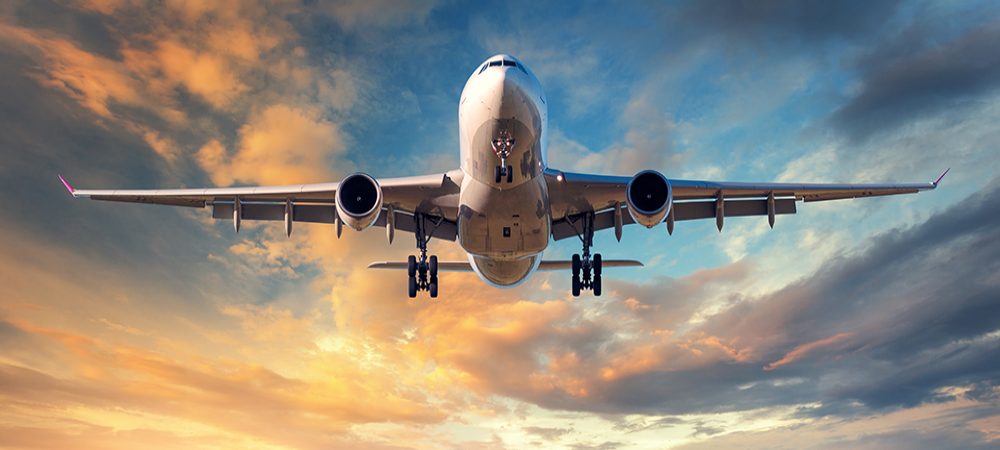With the aviation industry being one of the sectors most impacted by the COVID-19 pandemic, Tara Mulrooney, VP for Technology and Innovation, Edmonton International Airport, tells us how the industry is utilising technology to recover as rapidly as possible.

Despite the immense difficulties caused to the aviation sector by the on-going COVID-19 pandemic, the industry stands to benefit enormously from advancements in technology.
Technological progress has the potential to allow the industry to capitalise on dynamic messaging systems, utilise IoT technology to more effectively manage airport environments and provide data to help with predictive maintenance, offering cost savings and commercial opportunities aplenty.
With passenger health and safety continuing to be the top priority for Edmonton International Airport, Tara Mulrooney talks us through how it is utilising technology in today’s environment and her hopes for the future of both the airport and the industry itself.
What are the major cybersecurity issues currently facing the aviation industry?
When I think of cyber, I always think about ‘what are we trying to protect?’ And of course, in an airport environment there’s a lot of data, and although much of it isn’t stewarded by the airport itself – passenger data in Canada is really the property of or under the stewardship of airlines – that information is certainly traversing our networks.
I think about that and I think about the diversity of the networks for us. CATSA, which is our security screening group, have their own network on-premise. CBSA and US CBP and the border agencies also have their own networks on-premise.
For me, it’s really about understanding that ecosystem and making sure that we’re influencing the controls, not just on our own networks but on those networks that are part of that ecosystem. I think about that and I think about the challenge that we have as airports to keep everything current.
There’s such a vast array of assets; so many cameras, so many kiosks: how do we ensure they’re hardened? I think the OPEX requirements in an airport to maintain are often not there, from a budgeting perspective and a resourcing perspective, and COVID has really exasperated the issue, of course, for airports. So really, we’re looking at making sure when we invest in technology that we look at that total cost of ownership, and we make sure there’s support models around maintaining and managing those assets effectively.
What would you say are the main pillars of the airport’s Digital Transformation strategy?
We’re calling this our innovation expansion strategy, initially we talked about digital but we’ve matured a little bit. One of our main pillars is really building ancillary revenue, by doing this with our Airport City and with other revenue sources, we reduce fees to passengers. We maintain that airport better without becoming a burden on that aviation factor.
The second one is to improve our passenger experience. And the third is about optimizing our airport itself. And so for us, when we think about that we’re looking at the ancillary revenue space, how can we look at Smart City type concepts to make managing that airport environment more efficient and effective, making it a place where our tenants can really realize their benefits with a low cost sort of land development model. For passenger experience, we’re looking, like many airports, at queueing technologies and at dynamic messaging.
And then, of course, for optimizing the airport, how can we leverage IoT and those smart building concepts to really efficiently manage that environment, lower our HVAC (Heating, Ventilation and Air Conditioning), manage our lighting, give us clues to predictive maintenance before we have the big bills of having to replace various pieces of the facility.
How has the airport used technology to make the passenger experience safer during the pandemic?
We have a COVID recovery program. When we had our significant cuts to our capital and OPEX budgets, there was a cross functional group who looked at all the priorities and sort of said ‘OK how do we look at passenger safety, employee safety, operational efficiency and what projects are really key there?’
Currently we have two big rock projects. One is our public address system. It was quite archaic and we’re looking at significant modernization and integration with our content management tools, with our FIDS (Flight Information Display System) and our digital displays.
So, we’re looking at how we can get that public health information out to passengers in a dynamic way without having to go to a vendor to help us script various messages. We’re looking at that integration platform, that content platform and to provide visual pages to passengers across the terminal.
The second big rock that we’re looking at right now is really expanding on telecommuting, so like all airports we rushed and got a large percentage of our staff to work from home, but really I wouldn’t say that we have all the tools for real collaboration and for a real modern workplace sort of environment.
So, we’re looking at cloud desktops. Again, that will save us from an OPEX and a management perspective, and we will keep our staff safe. Because we know that this will be a prolonged event as we saw with our second wave here and wanting to make sure people are as productive and as effective as they can be.
In terms of 2021, I’d say we’re moving up that innovation chain a bit. We’re looking at virtual information comments – can people get help through their mobile phone or through the digital displays in the airport rather than walking up to people and asking for help – in terms of social distancing – can we do that virtually?
We’re looking at queue management, as part of the ACI working group, and really watching what some of the other leading airports are doing. And again, can we help people as to when they should enter those condensed areas? So, again, that’s to provide that distancing.
And finally, can we disperse certain functions outside of the terminal? Can we protect that perimeter and not let people have to come into the terminal to check in or to print their boarding ticket? We have a pilot that we’re actually working with Toronto on called ‘Cups in a Suitcase’. And we would allow this to happen perhaps in our parking areas or even in our premium outlet mall on Airport City. Again, this is about letting people do what are traditionally functions that have to be done in-terminal outside of our terminal.
You mentioned earlier, the innovation expansion strategy that the airport has got. How is that going to be used to allow your staff to apply greater insights through data?
Part of what we’re doing is we’re creating a true integrated repository of information. And I’m not going to use the word ‘data warehouse’ because that tends to be really about reporting tools which tend to be after the fact. But we’re looking at an integrated set of hubs. One is the data itself in a way that we can leverage it for algorithms, for reporting tools, etc.
The second is really about an event hub and I think that’s where things are a little different. Can we actually grab messages through a messaging environment that are coming from various systems? And then can we use and orchestrate those messages to other systems and stakeholders?
So, if we think about staff, they will have a great integrated environment to leverage all kinds of different tools and capabilities on for predictive analysis modelling, etc. And then for events, let’s say we get an event coming in from a flight that says they’re going to come late. Can we quickly make that event integrate to our AODB (Airport Operational Database) and to our gating system?
And again, can we automate the action that the event requires. Perhaps it allows us to gate a different plane in the meantime, so it’s in that interim space. It informs the refuellers that they shouldn’t come yet to that boarding gate, etc. So we’re really wanting to get not just at that data level but at that event level, as part of our platform.
How is the airport going to use technology to increase capacity?
Really, we’re looking at flow, not just us managing the flow but informing people and providing them with options as to when they should approach these various queues.
Can we, whether it’s through their airline app, through a mobile messaging service if they’ve subscribed to it, tell them our central security has a wait time of this and we recommend that they approach at this time?
Can we improve from a counter perspective? If there are line-ups at some counters can we tell passengers to go to counters at a different part of the airport?
If a shuttle that was going to take a passenger to their hotel now won’t be arriving for 12 minutes can we tell them that they now have time to go and get that coffee?
We’re really, again, leveraging those same hubs, to provide those direct opportunities for passengers to interact with us. We’re trying to work with our partners to say, ‘can you share your events and data with us in a private and secure way?’
So we’re not looking at trying to leverage that for advertising or marketing purposes, but really if you as a passenger would like to be informed of these different events that impact your travel experience then we will be that orchestrator within our airport to provide that information to you in a meaningful way.
And we think that if we can improve that flow and provide that dynamic scheduling of activity, that we can do more within that same footprint. We don’t need to expand the terminals. We think that we can simply make better use of the terminal by flowing people more effectively to different parts of it.
Click below to share this article

